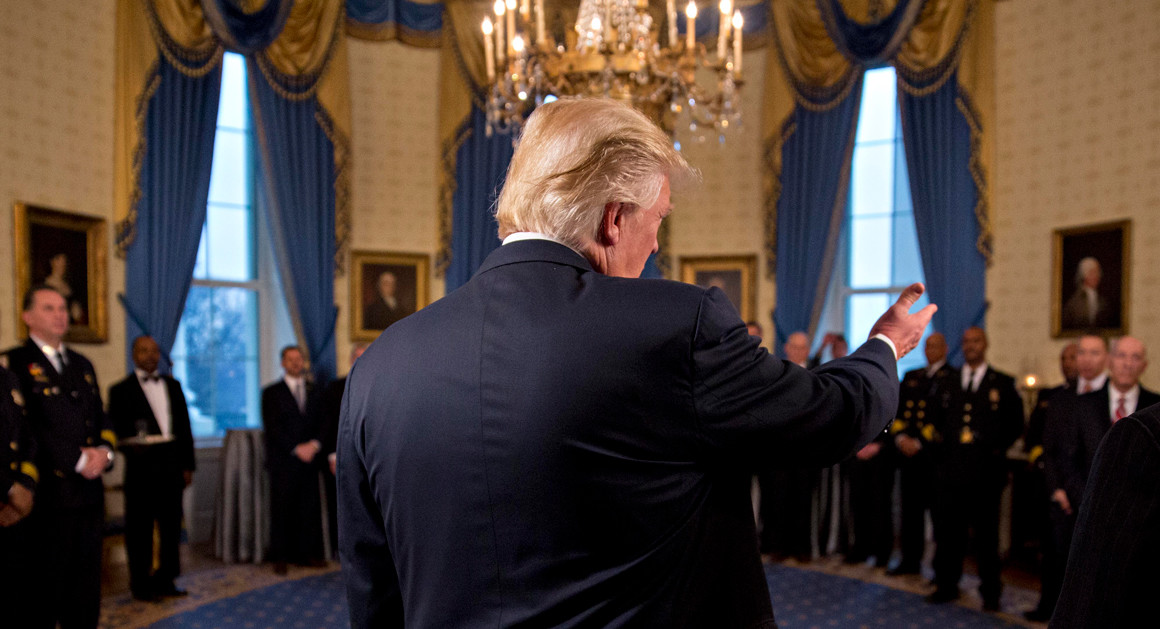Trump’s Yuge Week One
President Donald Trump’s first seven days in office were historic, chaotic, often astonishing and sometimes unsettling. With a flurry of provocative executive orders, surreal events, unapologetic falsehoods and did-he-really-say-that tweets, Trump continued to obliterate political norms, serving notice that the gaze of history won’t change who he is. He made so much news and did so many unorthodox things that it was hard to keep track of everything that was changing in Washington. The question, though, is what did all that sound and fury signify?
It certainly didn’t signify nothing. Most of Trump’s initial actions won’t have much direct impact on public policy, but many of them suggest huge changes are on the way. Some actions didn’t seem to justify the media hype, like his executive orders reining in Obamacare, blocking a cut in low-income mortgage feeds and freezing all new rule-making, or the typical start-of-term controversies over the alleged muzzling of government bureaucrats. Other developments actually seemed underhyped, like his apparent success in persuading congressional Republicans to support his entire Cabinet and ignore his enormous conflicts of interest, or new immigration restrictions that got overshadowed by Wednesday’s headline about his official push for a border wall. And it’s hard to assess how much hype some of Trump’s pronouncements deserve. Who knows whether he truly meant his threat to “send the Feds!” into Chicago to address street violence, or whether he was just tweeting off steam while watching a Bill O’Reilly segment?
What seems properly hyped is the overall sense that America is careening into strange uncharted territory. With so much jaw-dropping news breaking at such a rapid pace, it can be hard to distinguish the real historical hinge points from the momentary furors. So here is a guide to the first seven days of the Trump administration, rating everything that’s been done on a 1-to-10 scale according to its substantive policy effect now—and its potential significance for the future.
The Obamacare Order. Trump’s first executive order on Inauguration Day directed his agencies to do whatever they could, “to the maximum extent permitted by law,” to minimize the impact of Obamacare until it can be repealed. This sent a strong Day One message that the president is an enemy of Obamacare.
But everyone already knew that. The order itself didn’t really do anything. It did signal that the administration may try to undermine the law by relaxing enforcement of its individual insurance mandate, and by granting exemptions to provisions whenever possible. Those behind-the-scenes moves could destabilize the fragile insurance market for Americans who aren’t covered through their employers or Medicare. But again, that’s no surprise. Trump is heavily invested in the failure of Obamacare, which is why his White House also cancelled the federal ad campaign encouraging the uninsured to sign up through its exchanges. If anything, the order was a reminder that repealing Obamacare—and especially replacing it with a plan that can attract a congressional majority—will be one of the more daunting and complex tasks that Trump faces. The sporadic hints out of the Trump camp that the president might be open to turning the federal Medicaid entitlement for the poor into a block grant to states—a walkback of his campaign promise to protect the program against any cuts—may pose a more imminent threat to the health care status quo.
Immediate Impact: 2. Potential Importance: 4.

